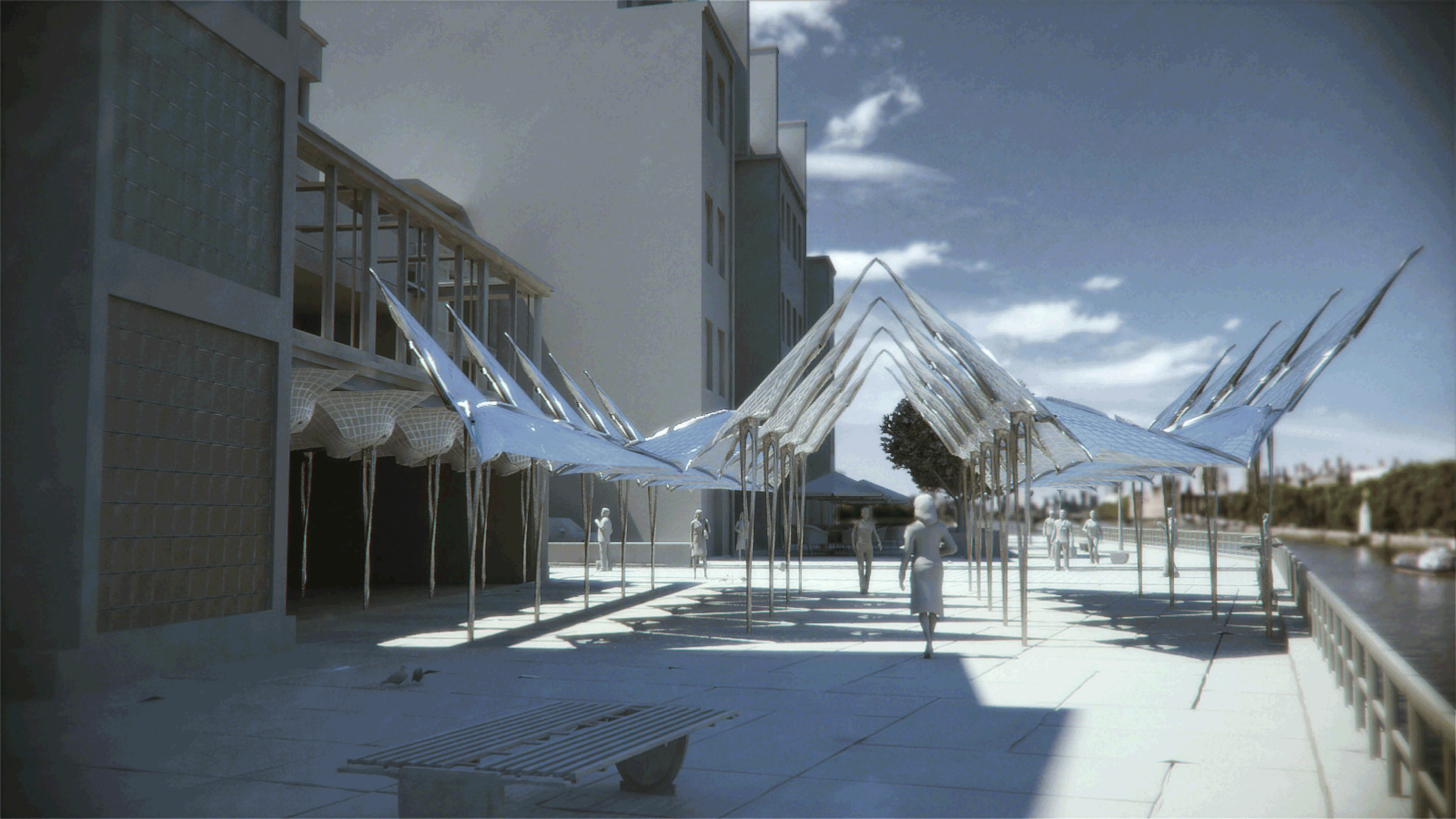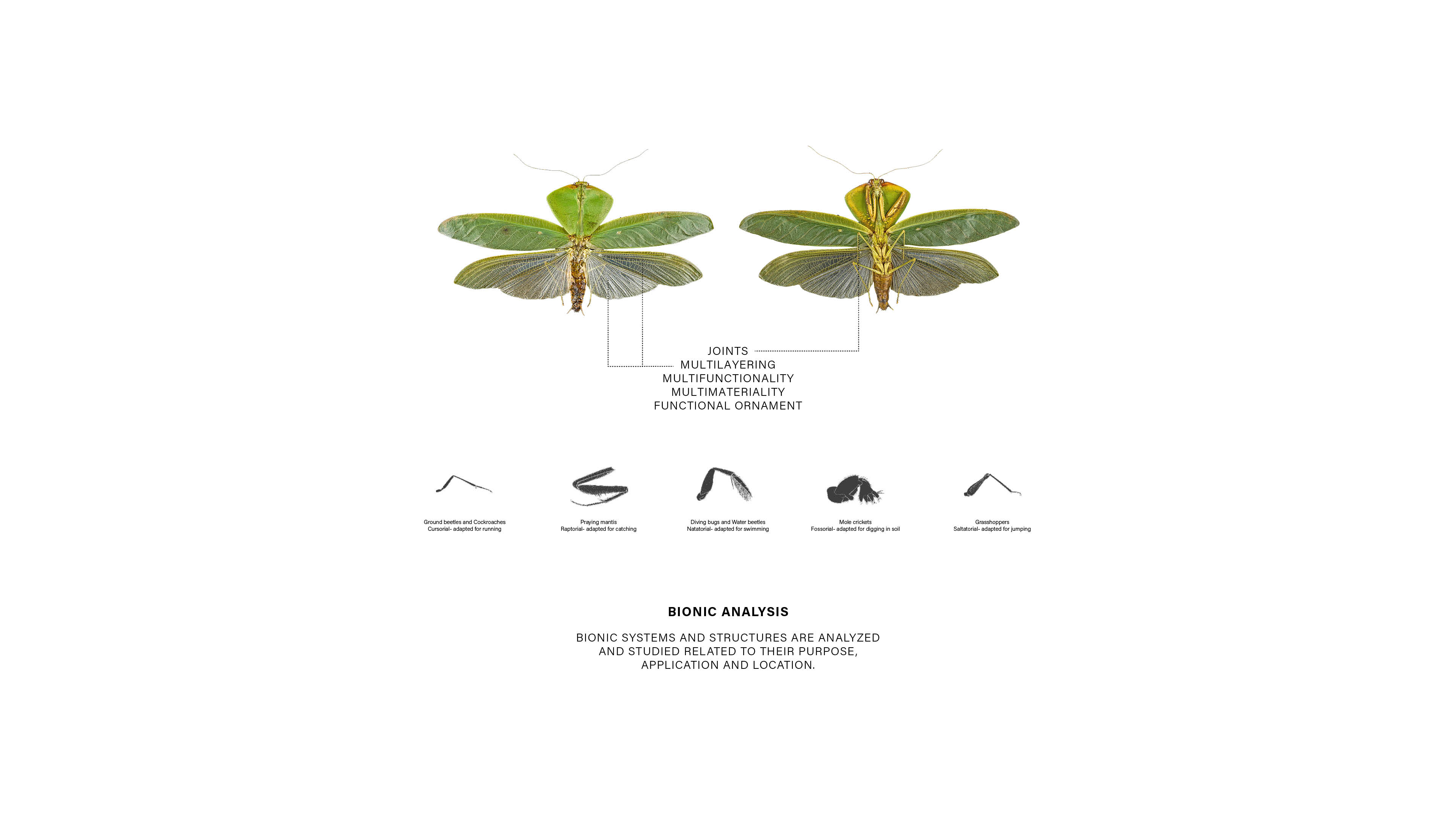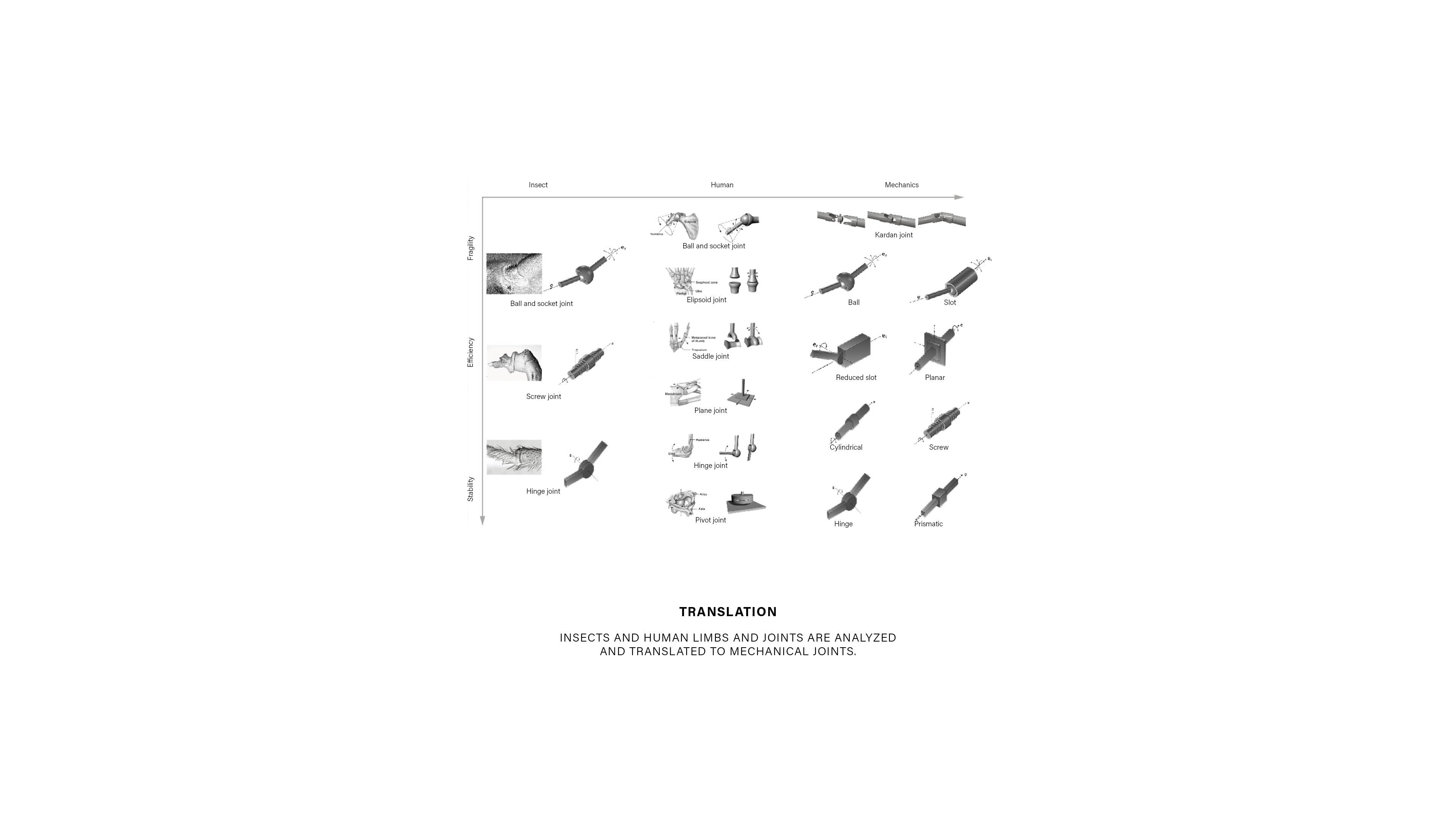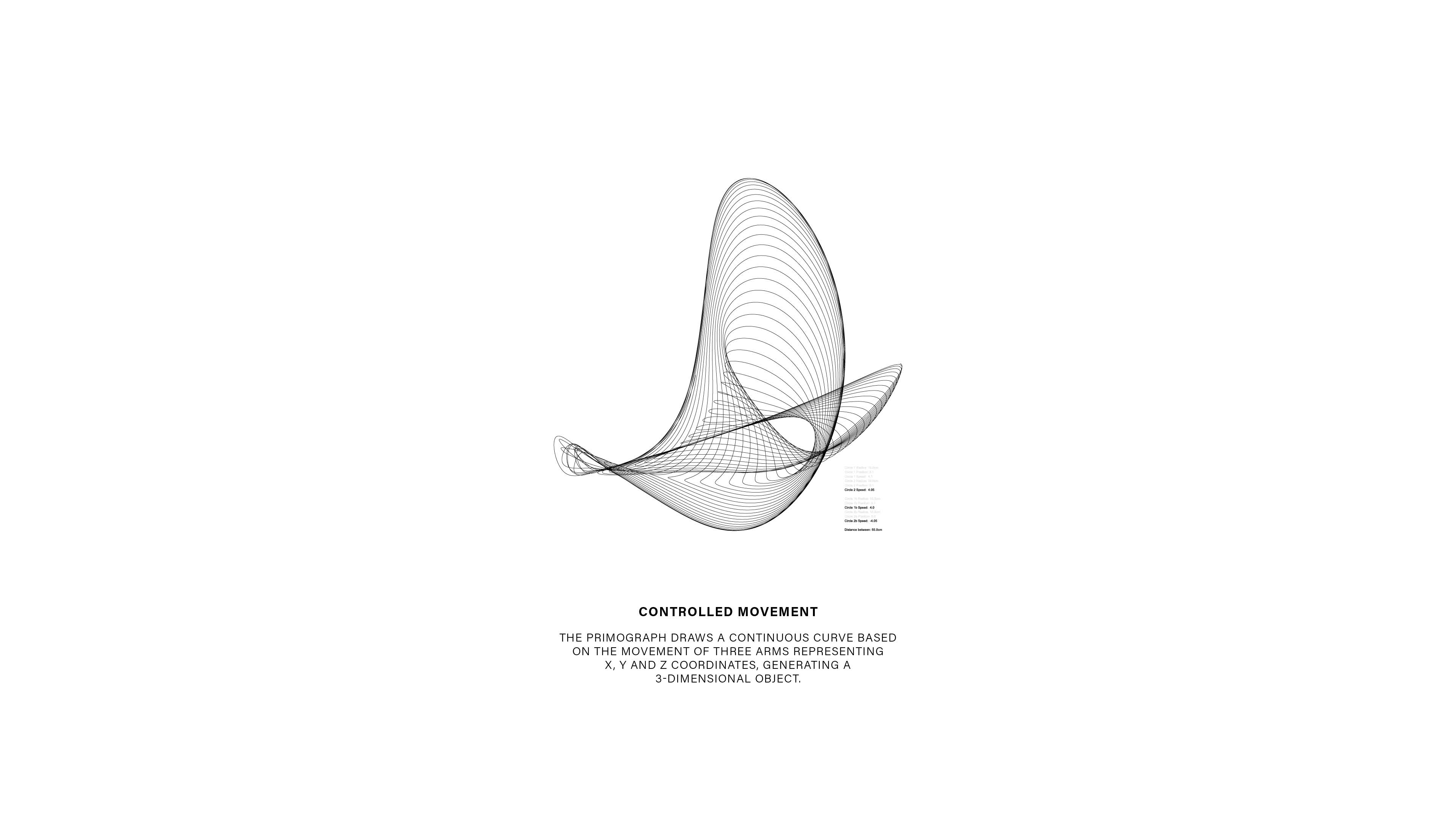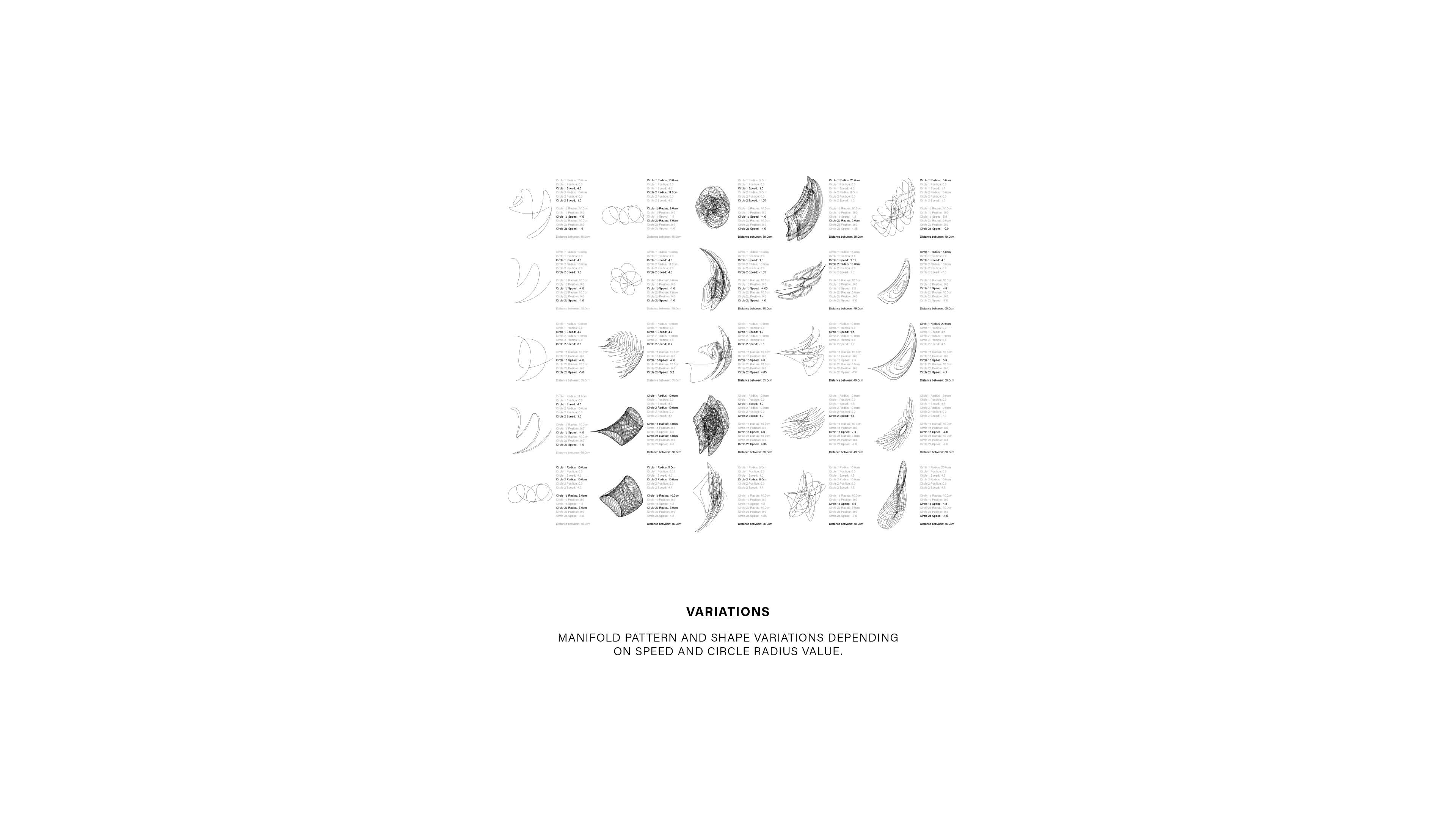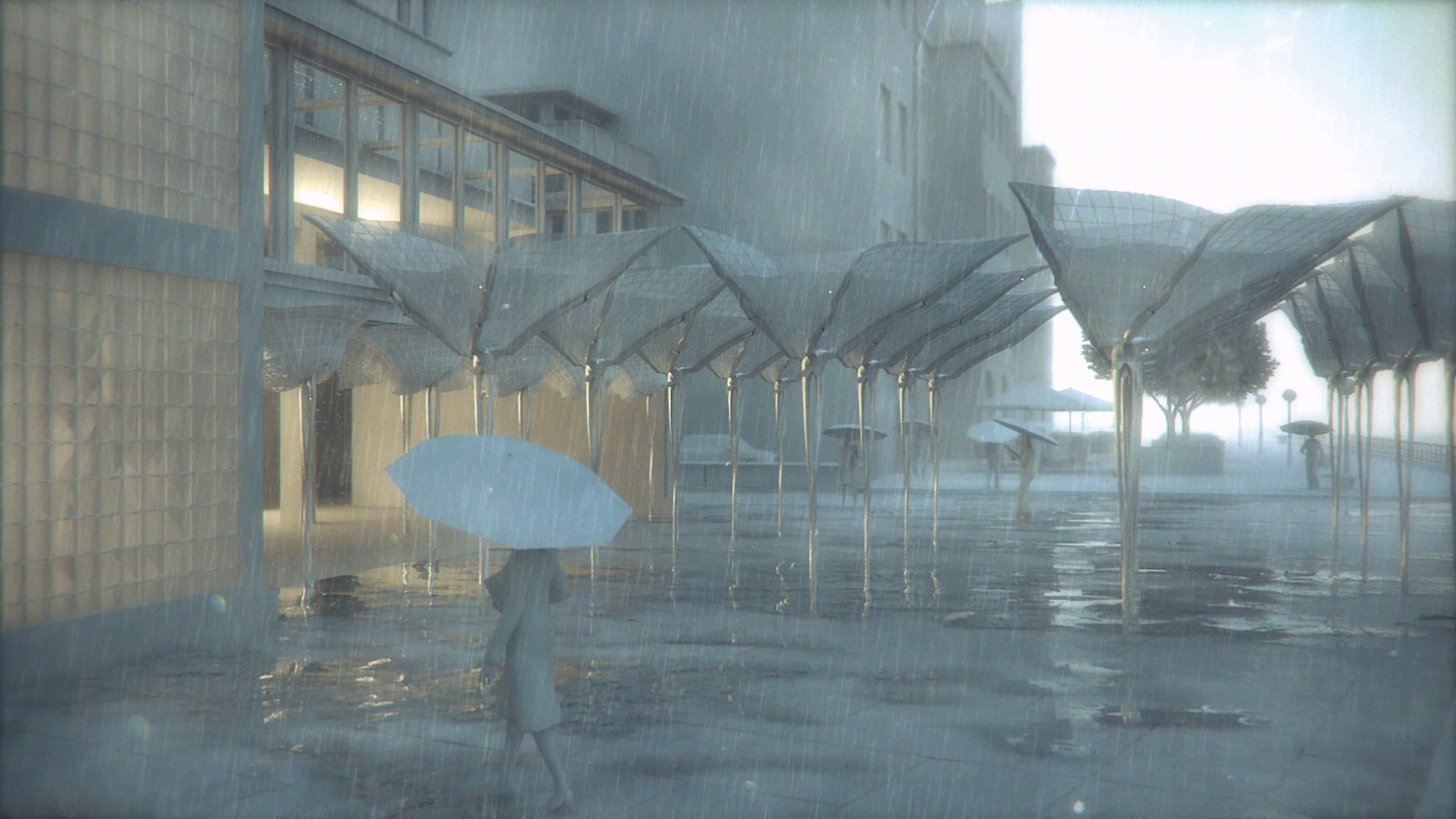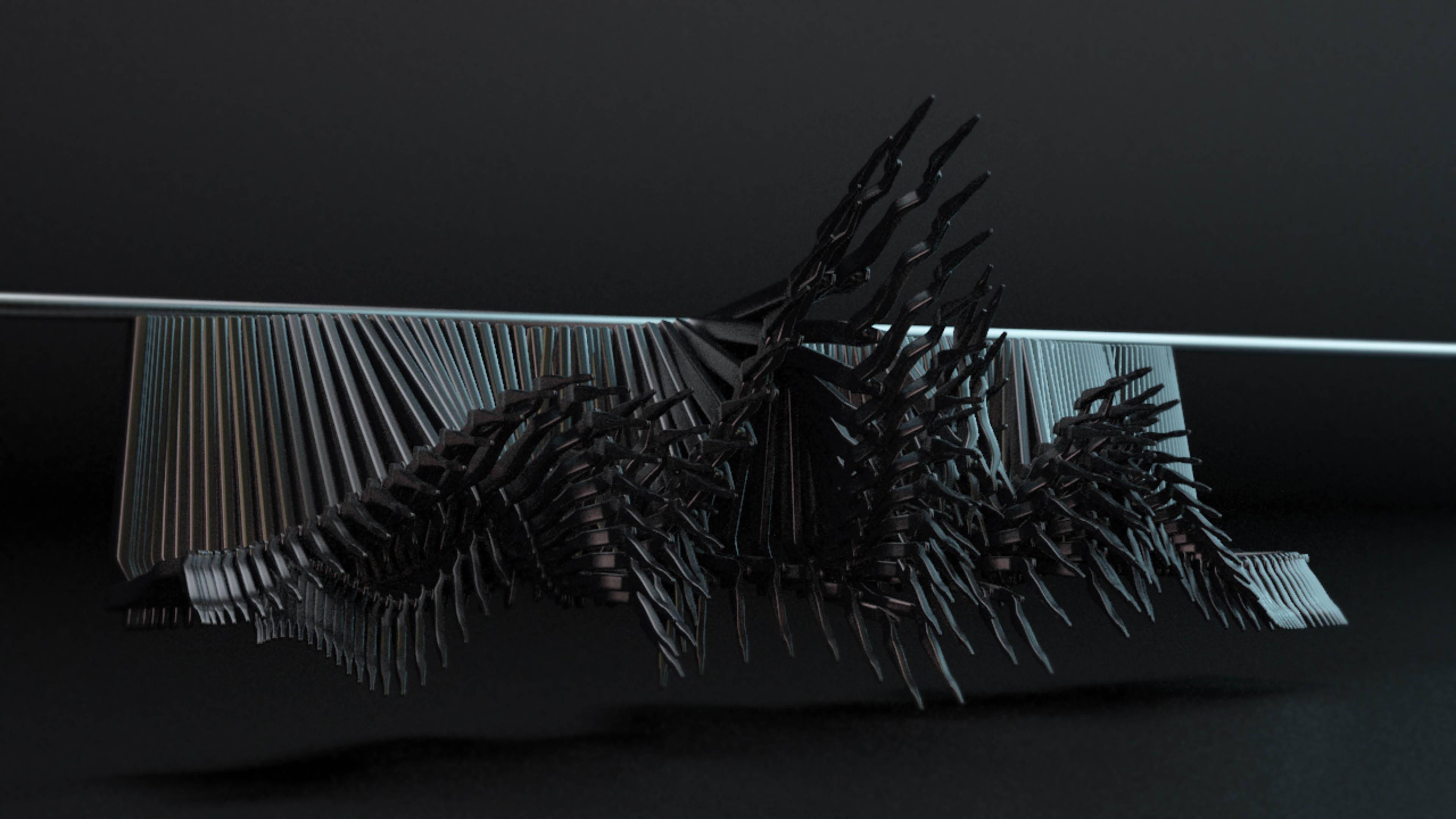The aim is the development of kinetic spatial organisations and how to add them to the existing structure of the london design museum by looking at biological systems and their transformative performance.
Observation of insects, their exoskeletons, segmented bodies and jointed limbs inspired us to explore possible options for different technical translations.
furthermore, exploring insect motion led us to develop our own movement logics based on the analysis of primograph and harmonograph ideas.
the apparatus of the harmonograph draws a continuous curve based on themovement of three arms representing x, y and z coordinates, generating a 3-dimensional object. it represents the controlled relationship between visual harmony and mathematical ratios. Looking deeper into kinetic arms, hinge trajectories and their simple movement creates complex visual outputs which led us to create the object.
from object to the field, the object becomes part of the composition acting like a kinetic transition from exterior to interior. the motion generated by different movements of each arm creates a choreography that represents a gradation of space and continuous transformation. through dynamic compositional elements space is reorganized, creating new modes of use and experience within the environment.

